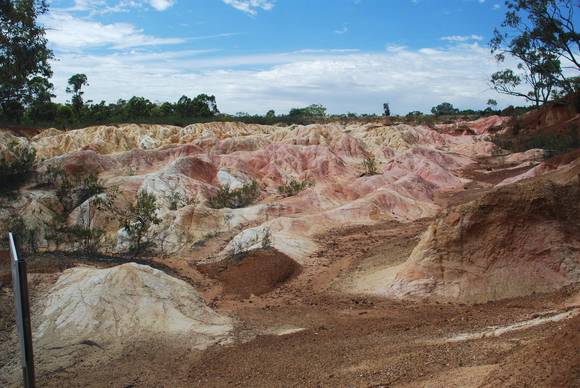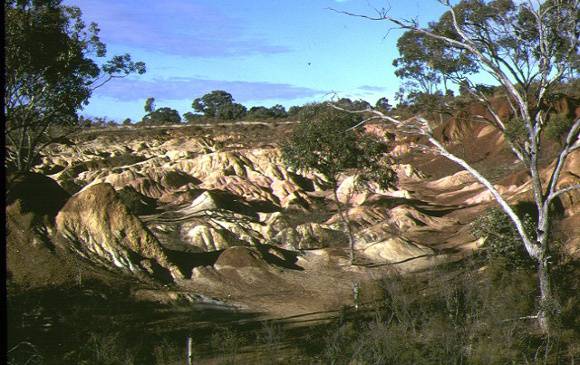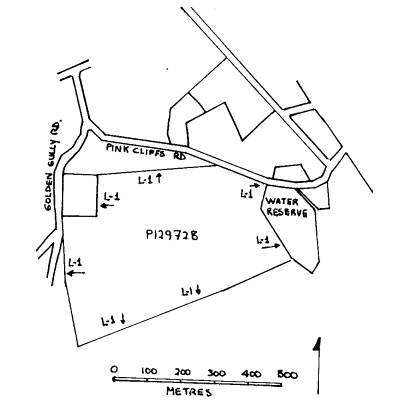| Back to search results » | Back to search page » |
|
PINK CLIFFS HYDRAULIC GOLD SLUICING SITE
Other NameHEDLEY'S SLUICING WORKS LocationPINK CLIFFS ROAD HEATHCOTE, GREATER BENDIGO CITY
File Number608050LevelRegistered |
|
Statement of Significance
What is significant? Hydraulic sluicing operations on the site were carried out under the
direction of James Hedley from the late 1870s through the 1880s.
Hedley's gold mining operations were finally banned because of damage
wrought to grazing land. Water for the sluicing was delivered to the
site by water race and high pressure pipelines and then directed at
the gold-bearing deposits. The associated water race, which runs for
some 26 miles, is largely intact. The gold sluicing site is dominated
by one large sluice hole, which, due to the highly coloured granite
bedrock exposed by the mining, presents a unique and a very dramatic
scenic landscape. How is it significant? The Pink Cliffs Hydraulic Gold Sluicing Site is of historical and
scientific importance to the State of Victoria. Why is it significant? The Pink Cliffs Hydraulic Gold Sluicing Site is historically and
scientifically important as a characteristic and well preserved
example of a redundant form of gold mining. Hydraulic sluicing was an
important late nineteenth century development in mining technology,
which enabled the continued and more efficacious exploitation of
Victoria's dwindling alluvial gold deposits. Gold mining sites are of
crucial importance for the pivotal role they have played since 1851 in
the development of Victoria. The Pink Cliffs Hydraulic Gold Sluicing
Site is also significant because of its association with Thomas
Hedley, who, as a pioneer in the development of sluicing and dredging
in Victoria, was a prominent figure in the State's late nineteenth
century gold mining industry.
Group
Mining and Mineral Processing
Category
Alluvial Workings






